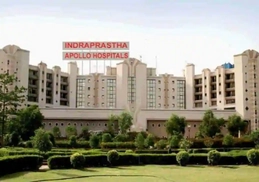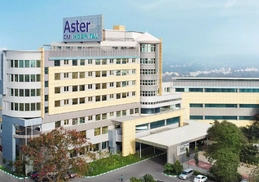
+91 8095511877

+91 8095511877
Sickle cell anemia is an inherited blood disorder. The disease occurs due to a defect in the genes that produce hemoglobin inside the red blood cells.
In sickle cell disease, there is a defect in the structure of hemoglobin, which is a protein present in your red blood cells. Your red blood cells have the shape of a disc normally. This defect causes your red blood cells to have a sickle shape, and hence the name sickle cell disease.
It also leads to the loss of flexibility of the red blood cells, which is essential for the blood to move through your blood vessels. The lack of flexibility causes the red blood cells to rupture very easily, leading to a decrease in their numbers in the blood. The result is that you have sickle cell anemia.
Sickle cell anemia affects both men and women. It is more common in people of African descent.
If you have sickle cell anemia, the most common symptom you will have is severe fatigue and tiredness. It is due to a decrease in oxygen levels in the blood. You will be prone to various infections.
‘Pain crisis’, where you may have severe pain, which lasts for hours, in parts of the body like the chest, abdomen, joints, etc. is another major symptom. Some major complications are stroke, severe lung problems, damage to major organs like spleen, kidney, liver, eyes, etc.
Medications will help you to control the symptoms to a degree. Blood transfusions will help to increase the number of red blood cells if the anemia is severe.
Stem cell transplant is the only curative treatment for sickle cell anemia. It involves the transplantation of healthy donor stem cells into the bone marrow of the patient.
You have sickle cell anemia if the genes that control the production of hemoglobin is defective. You get these defective genes from your parents. Genes carry the information to control the functions of your body, and they work in pairs. You receive a copy from your mother and one from your father to make the pair.
For you to have sickle cell anemia, both the copies of the genes that control the production of hemoglobin should be defective. If you have only a single gene, either from the mother or father that is defective, you have a sickle cell trait. In this, you will not have any symptoms of the disease as the healthy gene of the pair helps to produce normal hemoglobin. But you can pass on the defective gene to your son or daughter by being a carrier.
Persons with sickle cell anemia will have hemoglobin S, which is different in structure and shape from normal hemoglobin. It causes the red blood cells to have a sickle- shape than the usual disc shape. Red blood cells need to be very flexible to move smoothly through small blood vessels. But the sickle-shaped red blood cells find it difficult to move through these blood vessels. These also tend to rupture more easily, leading to anemia.
Sickle cell anemia is an inherited blood disorder where there is a defect in the pair of genes that control hemoglobin production. You are at risk if both your parents have the disease or act as carriers of the defective gene. You have a one in four chance to have the disease in this situation.
Sickle cell anemia is more common in people of African descent. People of Mediterranean and Asian descent are also among the high-risk group.
The main symptoms are
Almost all other symptoms occur due to the abnormal sickle shape of the red blood cells. It prevents them from moving smoothly through the blood vessels resulting in blocks to the normal flow of blood. It also causes various complications that affect almost all parts of the body.
All the complications occur due to obstruction of blood flow to various parts of the body. Loss of blood supply to certain areas will result in the formation of infarcts where the cells in the area die due to a lack of oxygen.
If you have sickle cell anemia, a blood test will help to diagnose it. Observing your blood smear under a microscope will reveal the sickle shape of the red blood cells.
Electrophoresis helps to precisely identify the type of hemoglobin.
Sickle cell anemia treatment includes medicines, blood transfusions, and stem cell or bone marrow transplant.
Medicines
Medical treatment aims to control the symptoms and prevent complications. The common medications are
Antibiotics – Daily doses of penicillin can help to prevent infections.
Hydroxyurea- It helps to prevent the sickled cells from sticking together and thereby obstructing the blood flow. Is effective in treating or preventing ‘pain crises’
Folic acid supplements- To improve the production of red blood cells.
Painkillers- To control pain.
If you have very severe hemolytic anemia, you will need blood transfusions. It helps to improve the levels of hemoglobin significantly. Transfusions are usually necessary for complications like splenic sequestration, aplastic crisis, severe acute chest syndrome, and severe priapism.
A bone marrow transplant is the only treatment to cure sickle cell anemia. More than 85% of people report an event-free life after treatment. Some severe symptoms or complications do not respond to medicines, and transfusions also may need a stem cell transplant.
You will have a stem cell/bone marrow transplant if you have severe complications like
During the treatment, you will receive healthy stem cells that can develop into normal red blood cells from a donor. Before the transplant, you will have chemotherapy and radiation to destroy your diseased stem cells.
You will have the transfusion into your bloodstream through a large blood vessel in the chest. Once in the bloodstream, the healthy stem cells move into and occupy the empty bone marrow space. After some time, the stem cells start producing normal and healthy red blood cells.
You will be in the hospital for about two weeks for the transplant. Recovery will take about two to three months.
With proper treatment, persons with sickle cell anemia can have an event-free life. Complications like stroke, lung problems, etc. can be life-threatening. Stem cell transplant improves the survival rate significantly


This article has been reviewed for medical correctness and relevance by
Dr Niti Raizada
Dr. Niti Raizada is a senior Medical Oncologist with over fifteen years of experience in the field. Dr Niti has special interests in the areas of Thoracic, Gastrointestinal, Breast, Gynaecological Oncology, and Bone Marrow Transplants. She did her MBBS at Gandhi Medical College, Bhopal; MD-General Medicine at G R Medical College, Gwalior, DNB-General Medicine from National Board Of Examination,DM from Adyar Cancer Institute Chennai and Fellowship in Hematology from Hammersmith Hospital and Imperial College,London. She is a member of American Society of Clinical Oncology,USA; Royal College of Physicians,Edinburgh,UK; Member of Pharmacy Committee,Member of DNB teaching program in Medical Oncology and European Society of Medical Oncology (ESMO).

Aida Ismail
Australia

Apollo Chennai

Apollo Health City

Apollo Indraprastha

Aster CMI

BLK Hospital

Fortis Bangalore
Frequently Asked Questions
Can sickle cell disease be cured?
Is sickle cell disease common in India?
What is the cost of sickle cell disease treatment in India?
What is the best treatment for sickle cell anemia?